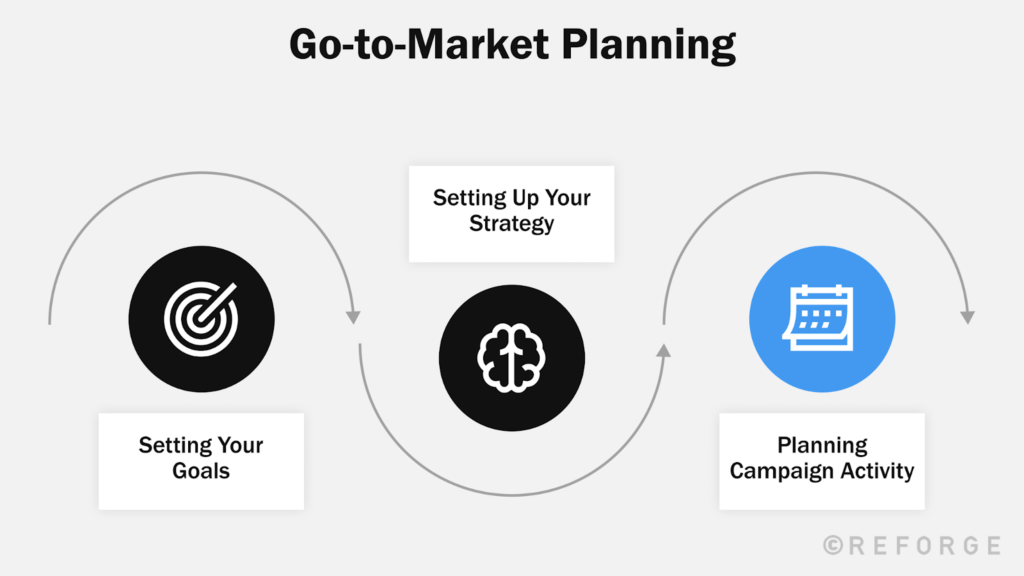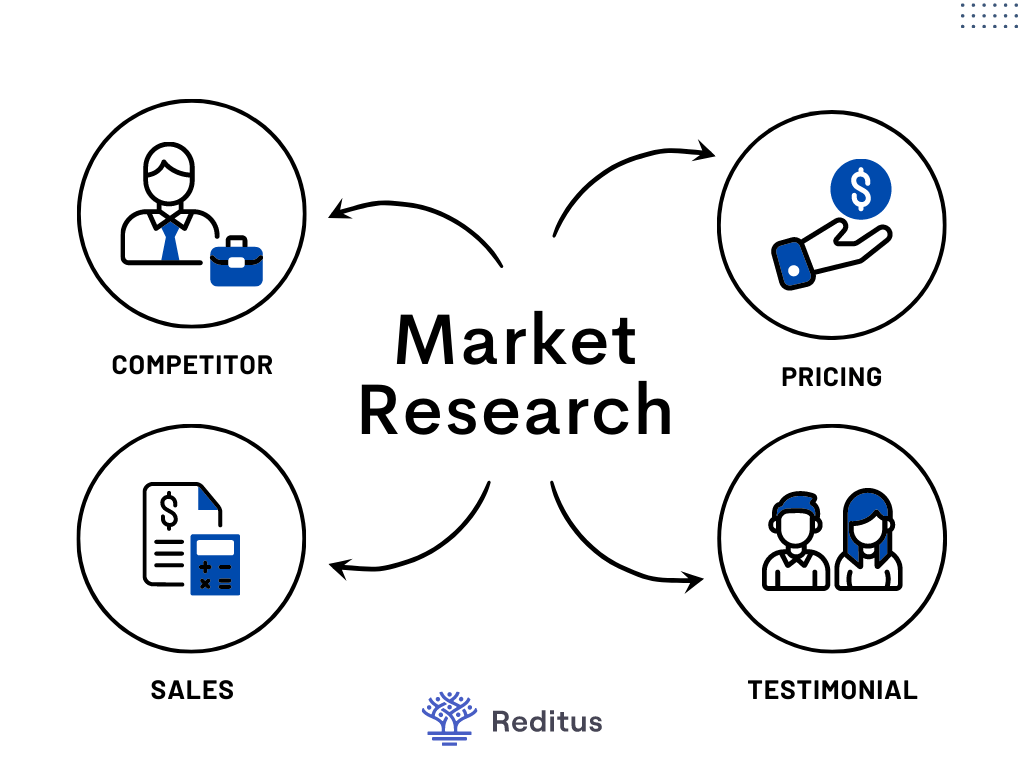What Is a Go-To-Market Strategy? Guide for SaaS Brands

Going to market is a critical part of any SaaS business. It'sIt's the plan that helps you reach your target audience and maximize your potential for success.
- But what is a go-to-market strategy, exactly?
- How do you develop one that works for your brand?
- And how can it be implemented efficiently and effectively?
This article will provide an overview of go-to-market strategies (GTM), why they are essential for SaaS businesses, and some tips on creating an effective GTM plan tailored to your needs.
So let's get started!
Table of contents
What Is a Go-To-Market Strategy?
A go-to-market strategy (GTM) is a plan that outlines how you will reach your target audience and make them aware of your brand, product, or service. It outlines your strategies and tactics to drive sales and grow your SaaS company.
GTM plans typically include the following:
- Market research
- Product positioning
- Pricing strategy
- Customer segmentation and targeting
- Sales channels selection and optimization,
- Marketing tactics and campaigns
A go-to-market strategy also helps you identify gaps in the market that you can take advantage of.

It's important to note that GTM strategies are not one-size-fits-all.
Every brand has different needs and goals, so your GTM plan should be tailored to your objectives. A B2B SaaS company will have a different go-to-market strategy than a B2C e-commerce business.
Depending on your goals, you should focus on tactics such as organic marketing, paid advertising, content marketing, email campaigns, or influencer outreach.
Why Is a Go-To-Market Strategy Important for SaaS Businesses?
The importance of having a go-to-market strategy cannot be overstated.
It's a vital component of any successful SaaS business. It can help you increase sales, grow your customer base, and create a strong brand presence.
A GTM strategy helps you focus on the most important elements of reaching your target audience and making your product or service stand out.
It also allows you to evaluate different tactics and channels to determine which will be the most effective for your business.
Additionally, having a go-to-market strategy helps you stay organized and on track. It makes it easier to measure your progress and adjust your tactics as needed.
Some other benefits of having a go-to-market strategy include:
- Improved customer segmentation and targeting: You can focus on the most profitable customers and target them with the right tactics.
- Reduced time to launch: A GTM plan allows you to plan and launch your product or service faster
- Better pricing strategy: You can optimize your pricing based on customer segments, market trends, and other factors.
- Increased customer loyalty: Developing a go-to-market strategy allows you to create more personalized, seamless customer experiences and build loyalty.
How Can You Develop a Go-To-Market Strategy For Your SaaS Company?
Creating a go-to-market strategy can seem daunting, but it doesn't have to be. The key is to take a step-by-step approach and cover all the bases.
Let's explore critical steps for developing a successful go-to-market strategy for your SaaS business.
1. Conduct Market Research
First, you need to understand your audience.
- Who are they?
- Why would they want to use your product or service?
- What are their pain points?
- How will you solve them?
Above all, you must understand what makes your product or service unique and how it stands out.

For instance, do you offer more affordable prices?
Do you have unique features or benefits that other products don't offer?
Answer these questions, and you'll better understand what makes your product or service different.
A clear understanding of your target customers will help you create a go-to-market strategy tailored to their needs.
2. Develop Your Positioning
Once you understand your customers well and what makes your product or service unique, it's time to develop your positioning.
Positioning is how you present your product or service to potential customers.
Creating a unique, compelling story that resonates with your target audience and emphasizes your value is essential.
3. Set Your Goals
Now that you have a positioning statement and understand your target customers, you must set some goals for your go-to-market strategy.
Your goals should be realistic and achievable.
For example, one goal could be to increase customer acquisition by 10% within 3 months.
Or, you could set a goal to increase sales by 15% over 6 months.
Your goals should be measurable and time-bound, so you can track your progress and adjust as needed.
You may have other goals in mind depending on your business and product.
Just make sure they're measurable, achievable, and realistic.
4. Choose Your Channels
Now that you have your goals, it's time to choose the channels and tactics you'll use to reach your target customers.
- Will you use social media? If so, what platforms will you focus on?
- Will you use content marketing? If so, what type of content will you create?
- Do you want to focus on PPC campaigns? If so, what keywords will you target, and on which platforms?
Consider all the channels and tactics at your disposal and how they can best reach your target customers and achieve your goals.
5. Craft Your Message
Once you've chosen your channels and tactics, you must create a consistent message that speaks to your target customers.
Think about the benefits your product or service offers and its unique value.
You want to craft a message that resonates with your target audience and emphasizes how your product or service can help solve their problems. Product launch videos are a great way to communicate this message and keep it engaging.
6. Measure and Track Your Results
Finally, it's vital to track and measure your results.
You need to understand what'swhat's working and what's not to make adjustments as needed.
Make sure you set up tracking and analytics tools to measure the success of each channel, tactic, and campaign.
By doing this, you can optimize your go-to-market strategy and ensure it'sit's reaching your target audience in the most effective way possible.
Go-to-Market Strategy: FAQs
Before wrapping up, let'slet's answer some of the most common questions about go-to-market strategy.
What is the purpose of a go-to-market strategy?
A go-to-market strategy aims to create a plan for reaching and engaging your target customers most effectively.
How long does it take to develop a go-to-market strategy?
A: The time it takes to develop a go-to-market strategy depends on the size and scope of your business. However, most systems can be created within a few weeks or months.
What are the components of a go-to-market strategy?
The components of a go-to-market strategy include understanding your product or service, developing your positioning, setting goals, choosing channels and tactics, crafting a message, and measuring and tracking results.
Conclusion
Creating a plan that considers your product or service, target customers, and desired goals is essential.
By understanding the go-to-market strategy, developing an effective plan, and tracking and measuring results, you can ensure your business reaches its target audience most efficiently and effectively.
Hopefully, this article has given you a better understanding of go-to-market strategy and how it can help your business succeed.

